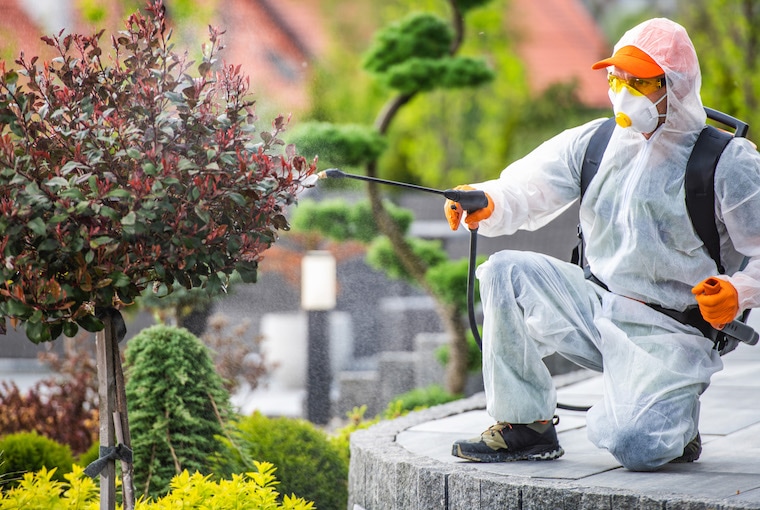Best way to start and get into pest control
Pest control is an essential service that helps protect homes and businesses from the damaging effects of pests. Whether it’s ants, termites, rodents, or bedbugs, pests can cause significant damage and pose health risks to people and pets alike. Starting a pest control business is a great way to help people while building a successful business. In this article, we will cover the best way to start and get into pest control.

Obtain Proper Licensing and Training
Before starting a pest control business, it is essential to obtain the proper licensing and training. Most states require pest control businesses to be licensed and have certified pest control applicators on staff. The certification process typically involves passing an exam and completing a certain number of training hours.
There are various resources available to obtain the necessary training and licensing, including online courses and in-person classes. Some states may also require continuing education to maintain licensure, so it is essential to stay up-to-date with any changes in regulations.
Decide on a Business Structure
Once you have obtained the necessary licensing and training, it is time to decide on the business structure. There are several options to consider, including sole proprietorship, partnership, limited liability company (LLC), and corporation.
Each business structure has its advantages and disadvantages, and it is essential to weigh the pros and cons of each before making a decision. Consult with a business attorney or accountant to determine the best structure for your pest control business.
Develop a Business Plan
A business plan is a critical component of starting any business. It outlines the company’s goals, strategies, and financial projections. A well-crafted business plan can help attract investors and secure funding.
When developing a business plan for a pest control company, consider factors such as the target market, services offered, pricing, and marketing strategies. A thorough market analysis can help identify competitors, target customers, and pricing strategies.
Obtain Insurance
Pest control businesses need to obtain proper insurance to protect themselves and their clients. General liability insurance is a must-have for any business, as it provides coverage for accidents and damages that may occur on the job.
In addition to general liability insurance, consider obtaining professional liability insurance and workers’ compensation insurance. Professional liability insurance can protect against claims of negligence or errors, while workers’ compensation insurance provides coverage for employees who are injured on the job.
Purchase Equipment and Supplies
Starting a pest control business requires purchasing the necessary equipment and supplies. This may include pesticides, sprayers, safety equipment, and other tools. It is essential to invest in quality equipment to ensure effective pest control and safety for employees and clients.
Marketing and Advertising
Once the pest control business is up and running, it is essential to market and advertise effectively. A strong online presence, including a website and social media profiles, can help attract new clients. Consider offering promotions or discounts to entice new customers.
Networking with other businesses in the area can also help generate leads and referrals. Attending trade shows and conferences can provide opportunities to showcase services and build relationships with potential clients.
In conclusion, starting a pest control business can be a rewarding and lucrative venture. By obtaining proper licensing and training, deciding on a business structure, developing a business plan, obtaining insurance, purchasing equipment and supplies, and effective marketing and advertising, a pest control business can be successful. With a commitment to quality service and customer satisfaction, a pest control business can become a trusted partner in the community.
FAQ
Most states require pest control businesses to be licensed and have certified pest control applicators on staff. The certification process typically involves passing an exam and completing a certain number of training hours. There are various resources available to obtain the necessary training and licensing, including online courses and in-person classes. Some states may also require continuing education to maintain licensure.
The cost of starting a pest control business can vary depending on factors such as location, equipment and supply costs, and licensing fees. However, on average, it can cost between $10,000 to $50,000 to start a pest control business. This includes purchasing equipment and supplies, obtaining insurance, and marketing and advertising expenses.
Pest control businesses need to obtain proper insurance to protect themselves and their clients. General liability insurance is a must-have for any business, as it provides coverage for accidents and damages that may occur on the job. In addition to general liability insurance, consider obtaining professional liability insurance and workers’ compensation insurance. Professional liability insurance can protect against claims of negligence or errors, while workers’ compensation insurance provides coverage for employees who are injured on the job.
A strong online presence, including a website and social media profiles, can help attract new clients. Consider offering promotions or discounts to entice new customers. Networking with other businesses in the area can also help generate leads and referrals. Attending trade shows and conferences can provide opportunities to showcase services and build relationships with potential clients.
Starting a pest control business requires purchasing the necessary equipment and supplies. This may include pesticides, sprayers, safety equipment, and other tools. It is essential to invest in quality equipment to ensure effective pest control and safety for employees and clients. It’s also important to stay up-to-date with industry trends and innovations in pest control equipment and technology.

